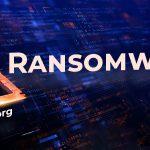In the labyrinth of cyber threats, Jopanaxye emerges as a ransomware variant from the Phobos family, wreaking havoc by encrypting files and coercing victims into paying a ransom for decryption. Identified through meticulous analysis of malware samples, this insidious ransomware employs sophisticated tactics to infiltrate systems, leaving a trail of encrypted files bearing the .jopanaxye extension.
Actions and Consequences of Jopanaxye
Upon infecting a system, Jopanaxye executes a ruthless encryption process, appending the victim’s unique ID and a contact email, jopanaxye@tutanota.com, along with the “.jopanaxye” extension to filenames. The ransomware presents two ominous ransom notes, “info.txt” and “info.hta,” outlining dire consequences for non-compliance. Threats of selling stolen confidential data and coercive demands for payment underscore the severity of the situation.
This ransomware’s impact transcends file encryption; it dismantles primary defense mechanisms by deactivating firewalls, eradicating Volume Shadow Copies, and exploiting vulnerabilities in Remote Desktop Protocol (RDP) services. Its persistence on infected systems, coupled with the capability to disable specific predefined locations, amplifies the threat’s longevity and resilience.
Detection and Similar Threats
Jopanaxye’s detection names span various antivirus platforms: Avast identifies it as Win32:Phobos-D [Ransom], while Combo Cleaner flags it as Trojan.Ransom.PHU. ESET-NOD32 labels it as a variant of Win32/Filecoder.Phobos.C, and Kaspersky recognizes it as HEUR:Trojan-Ransom.Win32.Phobos.vho. Other detection names can be found on VirusTotal.
Similar threats in the ransomware landscape include Cdaz, LIVE TEAM, and Shuriken, each carrying its unique modus operandi and potential for catastrophic data encryption.
Jopanaxye Ransomware Removal Guide
Note: Removal of ransomware is a complex and delicate process that requires caution. Below are essential steps:
- Isolate Infected Systems: Disconnect infected devices from networks and external drives to prevent further spread.
- Backup Encrypted Files: Create backups of encrypted files to preserve data integrity.
- Do Not Pay Ransom: Avoid complying with ransom demands as it doesn’t guarantee file recovery and encourages cybercriminal activities.
- Secure Professional Assistance: Consult cybersecurity professionals for guidance on potential decryption options.
- System Restore: Use system restore points or backups to revert systems to a pre-infection state, if available.
Preventing Future Infections
To safeguard against ransomware threats like Jopanaxye:
- Maintain Vigilance: Exercise caution when opening email attachments or clicking on links, especially from unknown sources.
- Regular Updates: Keep operating systems, software, and security solutions updated to patch vulnerabilities.
- Data Backup: Create regular backups of important files and store them offline to mitigate data loss.
- Security Measures: Implement robust security measures like firewalls, intrusion detection systems, and strong authentication mechanisms.
Conclusion
Jopanaxye ransomware epitomizes the grave threat posed by malicious entities in the digital realm. By understanding its actions, employing vigilant practices, and fostering a proactive approach to cybersecurity, individuals and organizations can fortify their defenses against such insidious threats.





